|
Week Two Update: Hive # 2 left. They just disappeared one morning. I got a call about a swarm about 5 miles away four days later, but I was unable to retrieve it or even verify that it was mine. Not likely though.
The hive that was left? Doing great! Building comb weird though, so much of it broke when I opened the lid. I switched the empty bottom box to the top and refreshed the feed. I saw few black hive beetles. This weekend I will be making a small hive beetle trap.
0 Comments
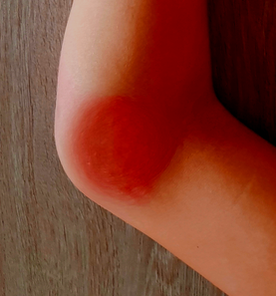 “Such bees! Bilbo had never seen anything like them. "If one were to sting me," He thought "I should swell up as big as I am!” ― J.R.R. Tolkien, The Hobbit or There and Back Again Stings are no joke. The first thing to do is not get stung, but it happens, so the next thing is to carefully remove the stinger. Do not squeeze the little ball of fluid at the end of the stinger. That's bee venom. Scrape out the splintered stinger with a credit card or paint boner or pocket knife. Upward strokes away from the venom sack. Once it is out, then what?
The old wives tale I was told was to apply crushed aspirin. That's just Salicylic acid! Burts Bees sells a concentrated acne spot treatment that is pure Salicylic Acid. It works. I keep it in my bee sting kit along with topical Benedryl, two epipens, and bandaids. More than a few of my apprentices have decided to not listen in the past, and OUCH! get stung. Always listen y'all. Always. Stings need to be treated until they are completely healed. A secondary infection can happen easily. Keep it clean, soak in epsom salts, and keep it covered in Neosporin. Trust me, a secondary infection is zero 0/10 fun. Necrosis can and has happened. "Skin grafting following surgical debridement is an adequate and practical treatment modality for such cases." In other words, don't play around. Don't get stung. If you do, treat it properly and until it is 100% healed. I came to beekeeping because of fear. I am afraid of some pretty weird stuff. Some people are phobic of spiders or snakes, but my list includes gloved oven mitts, people wearing gloved oven mitts, John Travolta's face, Nick Cages face (trust me Face Off the movie was a freaking nightmare come true), the ocean, knocking in the middle of the night, and birds that set things on fire. And bees. And the Atlantic Ocean/ deep water. The mall at Christmas. Phobic for me means losing the ability to speak and sometimes fugue state or severe nausea and throwing up. So you know it is a big deal.
When I turned 30 I decided to conquer these fears, one at a time. Bees seemed like a good one to start on. I found a local keeper who agreed to apprentice me, bought a suit, and got right into it. The first year was a lot of building boxes and frames, popping in foundations and boiling sugar water. Then, year two, 5 hives were installed on my own property, but the neighbor farmer decided to use a crop duster to spray his soybeans with pesticides and use my pasture for the turnaround. Every bee was dead by the next day. I found out then that I had no recourse. If my sheep had died, yes, but bees? Nope. I learned about the No Spray registers and immediately signed up. Then I took my lap top and got all my Amish neighbors registered too. That's when I became a bee activist. Not that it helped, every year the same thing would happen, crop-duster = dead bees. No recourse. It began to feel like the registry was for show only, and not for consequence. It was frustrating, yet I kept at it. Then the awful thing happened and the horrible divorce followed. In the divorce I lost everything but the beehives, my children, and my massive student loan debt. Retirement gone. Savings gone. Dignity gone. So I packed up what I had left and moved 1200 miles away to Georgia and.....started keeping bees again. A keeper once told me that bees are messengers of God. They carry up prayers. Tell the bees everything, a confessional. Don't forget that those white boxes are full of gospel, a continuous gospel. Listen. Listen and you may be healed. You may hear angels. You may hear God. But for certain He hears you. It seems strange, but most major religions and a lot of minor ones hold similar beliefs! In my smallest hours, I hold dear to my faith and I listen. My King Fu Sifu told me that we are never quite so completely human as when we are in hand to hand combat. One must be completely in your own body, completely in that present moment. No other thoughts, empty mind. I think that the same is true working with bees. So that's why I keep bees. Not for the honey, though that is delicious. I keep them for the peace, the flowers, the hope they bring. For the fear they take from me. I may still be healthy, silently afraid of John Travolta's face, but bees are now part of who I am.  Ingredients Pastry:
Sauce:
Sprinkle with sesame or poppy seeds; fresh mint or orange zest; or thyme or rosemary. Instructions
I learned to make these at church. I attend a Greek Orthodox church and every year the church community spends months gathering to make the food for the annual Greek Festival. These Tiropita are served at the festival plain. I can't remember where I had them as a dessert served with dried orange and cinnamon honey, but it was love at first bite. I have also had these with herbs cooked in, thyme or basil. Or savory sauces instead of sweet can be used to flip the Tiropita to less dessert and more salty appetizer. One thing though, I learned quickly, quality of ingredients matter. Ricotta instead of cottage cheese, real Greek goat milk feta (store bought is cow milk, feta like), and real Greek cream cheese make a huge difference in the flavor profile and outcome. I also prefer large organic backyard chicken eggs with the dark orange yolks. I also mentioned using a wooden spoon. When I was first learning to cook, I took lessons from a fellow toddler mom who had been trained in a French kitchen. Never, ever use plastic when mixing egg. That was rule number one. Glass and metal bowls, metal and wood spoons. Plastic is for leftovers and potluck picnics. Rule number two was always get the best ingredients you can find. Rule three was be present, be mindful, taste as you go. And that was it. Oh, and? Salt to your taste. Everyone else can just deal. Rachel always made me laugh. She made cooking fun. I digress: WOODEN SPOON. Clean and dry it immediately though. Wooden spoons need extra care to keep them clean and sanitary. Next? Share. Food brings people together. I always make two pies or an extra pan of lasagna or an extra few bowls of soup. Pack it up and gift it away. Invite people over. Good food makes people happy, happy people make a happy home, and loneliness is for a minute gone. This is how we build community, like the bees work together and share their food for the collective hive health, so, too ,do people thrive in a healthy community. If someone is holding a bee in their hand, what do they have in their eye?
Beauty of course! Because beauty is in the eye of the bee-holder! That is one of my favorite jokes that my kids tell. I think of it every time I go out and work the bees. It's true to a deeper meaning. I think these bees are beautiful. Yesterday I watched for about 10 minutes the new bees bring pollen back to the hive loaded on their back legs, bright orange like Cheeto dust. Then I opened the box to check their bee feed. All newly installed packages need this food because they have no honey stores and they need energy to start building comb for the queen to lay her eggs in. They are eating the feed slowly. Next I opened the box more, taking the inner lid off. The built the comb attached to it which is a problem, so I scraped it off and repositioned it between two racks. Next, I started pulling racks out, frames, and looked for the queen. She has a green dot painted on her and was easy to find. All was well so I put it all back. The next few days I did not wear a bee suit at all to open the top and check the feed. These ladies have a really relaxed "vibe" and are now familiar with me. I took my apprentice out to open a box, unsuited and the bees were less happy with his presence. How do I know? Bees don't sting right away. They give you warning "boops" as I call them. Like when you "boop" a cats or a baby's nose? The bees will fly and hit your face, buzz near your ears, and fly in aggressive circles around you until you back off. It is best not to swat. My apprentice was briefed on this bee behavior before walking out so he knew to put his arms down and back off. I knew it was time to put the lid back on and walk back to the farmhouse too. *Tip of the day- if a bee starts "booping" you, just walk away, hands down. “...The world was really one bee yard, and the same rules work fine in both places. Don't be afraid, as no life-loving bee wants to sting you. Still, don't be an idiot; wear long sleeves and pants. Don't swat. Don't even think about swatting. If you feel angry, whistle. Anger agitates while whistling melts a bee's temper. Act like you know what you're doing, even if you don't. Above all, send the bees love. Every little thing wants to be loved.” ― Sue Monk Kidd Do You Hear What I Hear.....the Buzz About Bee Sound Therapy Do You Hear What I Hear.....the Buzz About Bee Sound Therapy Two Types of therapy for anxiety and trauma use the sound of bees buzzing by Danelle Lejeune May 5, 2019 My first experience with a swarm was dangerous and due to a simple miscalculation in managing a hive stand repair. Thousands of agitated bees covered my suit, buzzing aggressively and I had to stand there, still and breathing steadily, almost like lamaze breathing, slowing down, in through my nose, out through my mouth. One bee got tangled in my waistband and stung me, but panic in a human releases a pheromone that will make the bees more aggressive, so I had to really focus to stay still, quiet, and calm. Eventually the bees settled and the other keeper was able to restack the boxes and brush the swarm off of me. The mindful practice of stillness, being in the moment (no pun intended), was the most relaxing and calming experience I had up to that point in my life. I go back to that place when I am in high stress situations, even now. But why? What about the sound of the bees was so calming in such a real and dangerous situation? The Johnston’s organ (A) and sbgenual organ (B) are the primary receptors for vibroacoustic signals (sound). Hunt and Richard (2013) To understand, we have to begin with how the bees make sound. It's not just the wings, actually. It is their whole body, using something called the Johnston's organ. The sound is actually referred to as vibroacoustics and its used to communicate, regulate moisture and temperature in the hive, give instructional cues for brood care, and even to shake up pollen in flowers. The next part of the equation is how humans hear it. According to an article in the American Bee Journal from 2015 by M. McNeil, "Honey bees produce many frequencies of vibration and sound – from less than 10 to more than 1000 Hz. " And according to Jonathan Goldman author of "The Humming Effect", the vibrations affect the "Cerebrospinal fluid (which) circulates nutrients and filters chemicals from the blood, removes waste products from the brain, and transports hormones to other areas of the brain. (Many different spiritual traditions also believe this fluid is sacred and is the conduit for vital life energy that travels up and down the spine and into the brain)....humming sounds of the bee resonate and stimulate various structures of the brain, including the pineal gland, pituitary gland, hypothalamus, and amygdala..." Listing to a live hive, recordings of the hive, or even using a Yoga technique called "Bee Breath" all have the same effect of calming and healing. It's the frequency of the sound, not necessarily the source that has the neurological and biological impact. There are even bee sleeping houses in Eastern Europe where people pay to sleep above beehives, to feel the vibration, breath the bee cleaned and honey scented air, and listen to the buzzing. A certified Yoga instructor, Teri Steele, explained the "bee breath" technique to me, "Thumbs in ears, fourth finger on nostrils, pressing down, two first fingers on closed eyelids, pressing down. Hummmm." It does sound and feel like being covered in buzzing bees, but without the threat of sting. This kind of sound therapy is called binaural frequency therapy, and it circles right back around to what the bees do naturally with their bodies: vibroacoustics. According to a website called Binaural Beats Meditation, "....biophysicist Doctor Gerald Oster brought the technology into mainstream awareness in a paper called ‘Auditory Beats in the Brain' (Scientific American, 1973). In his paper, Oster concluded; It is possible that hormonally induced physiological behavior changes may be made apparent by measuring the binaural-beat spectrum." In our modern times, specific range of frequencies are created, usually with synthesizers, and played using headphones with targeted frequencies for specific outcomes. Energy, good sleep, even physical healing. Bees just make the noise and vibration naturally. These recordings, tailored specifically to certain outcomes with frequency range and mixes, are available online, through Amazon, even YouTube. And yes, you can find them made with bee noise recordings. Does it work though? An article in Medical News Today, a couple studies were cited that referenced actual changes in Cortisol and DHEA levels, and one study that target pre operative patient anxiety levels. Positive outcomes were the results, though the study samples were small. There’s more to bees and apitherapy than the honey and both science and natural healers are exploring this side of bee life to help humans heal. I chose a shaded place to set the hives up and concrete blocks for the base. Some keepers use wood frames, concrete with wood planks, or pallets. Anything to get them off the ground, right? NO. Wood frames rot. They are just not stable. I use concrete and I have a lip out on each side to use as a work space and ventilation.
I first got the packages set on a table nearby and with a small hive tool that looks like a mini crowbar, I opened the nailed on lid and popped out the can of sugar water. Next, I cut the band holding the queen cage and set her to the side. The process of installing a package involves not being afraid to shake the bees out of the transportation box. It's quite a lot of banging and shaking and generally the bees are uncooperative. Shake shake shake those bees! Most of them fell in a dizzy clump to the bottom of the hive. As it should be. Next up? I opened the queen cage cork and quickly replaced it with a mini marshmallow. In the time it takes for the bees to eat through it, they will fall in love with their new queen. Hopefully. Queen secured, I lidded up the top, added the feeder box and can of sugar water, and lidded the very top. When hurricane season arrives I will also set bricks on top. I set the transportation box in front of the entrance so stragglers can find their way in. That's a wrap! I'll check on them every day for the next couple months. “The only time I ever believed that I knew all there was to know about beekeeping was the first year I was keeping them. Every year since I’ve known less and less and have accepted the humbling truth that bees know more about making honey than I do.” ― Sue Hubbell, A Book of Bees: And How to Keep Them 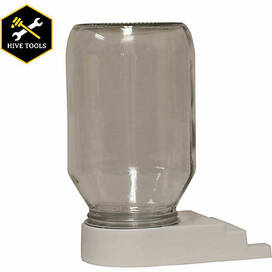 It's been a few years since I had to install a new package and feed them, so I opened up my Beekeeping for beginners workbook to get the feed recipe and ratio. Lo and behold? The feed is mentioned but not one note on the recipe. Not one. I got out my second book. Nothing. Google was better, but still not the first hit. It was as I remembered though 1:1 ratio sugar to water. Seems easy to remember I guess, but to newbies that are not apprenticing, or forgetful old timers like me? I need this information clearly laid out. I'll tell you now what my mentor told me- always use pure cane sugar. Refined. Pure. Cane sugar. Why the distinction? Beet sugar is all GMO. It has pesticide residue. Maybe that's fine for humans, but new bees gut flora is fragile. Refined sugar because the impurities that may make your bananas foster taste ah-maze-ing are also not so great for bees. My mentor told me it gives the bees.....diarrhea. Then they get weak, dehydrated, and die. Sure, pure honey is best, but that's expensive! So sugar water works fine. I use this feeder: I use my own sterilized quart mason jars and the bottom part is white plastic. Over the years I have used wooden ones, large frame size feeders, baby chick feeders, and one that looked like a plastic bucked with a screen bottom. They came with cans of sugar water with holes poked in the bottom. In my experience the wooden ones lasted maybe two seasons and were prone to mold. These white plastic are supposed to hook into the entrance but they don't work that way on mine. So I put an empty box on top and put it in there. The white plastic is easy to clean and mold comes off easy. If you click on the link it takes you to tractorsupply.com and you can buy them there or on Amazon. Recipe for BEE FOOD: Ingredients: 6 cups of refined pure cane sugar 6 cups of boiling water Directions: Stir and simmer until the sugar is 100% dissolved. Pour into sterilized jars hot and lid them quickly. Store in the fridge. Bees don't just show up! Most new beekeepers have to order packages and queens from a company. If the company is far enough away, the packages come by United States Postal Service. Those of you who have ordered baby chickens, know that some mail delivery people are none too thrilled with livestock mail. Bees specifically can make them upset. For this reason, and for healthier less stressed bees, I ordered from a local company and drove 20 minutes to pick them up.
That's right! Thousands of bees in my car! It's fine. I know how it works. Even if there are loose bees, and there are always loose bees, they are totally chill about the car ride. It was a hot day in Georgia when I drove to Jesup to pick these ladies up. I handled the boxes without gloves, as did the bee handler who sold them to me. I had the car cooled off and parked in the shade. I used a white sheet to cover the back of the car seats and protect from, well, bee poop. Make sure that you set them in the vehicle with the feeder can at the top so it can continue to feed them and doesn't pop out. Once the bees were positioned, some people tie them down, which honestly I should have, I put on easy music. These bees changed their buzzing to aggressive when I played Beethoven, which gave me a giggle. So I played the Bee Gees. Still no go! The Beatles, Let it Be? Nope. These ladies like CCR and Bob Dylan and Janis Joplin. My kinda ladies. The drive home was easy, I pulled up and parked in the shade near the beehive set up. My friend was set to arrive at 4PM. Two hours to wait. I opened up the back of the car and all the doors for ventilation and set out sugar water for the loose bees, about 15 to my count. That's right! I drove 30 miles with 15 bees in my car, windows rolled up, AC on, and good music. When I say that honeybees are usually chill, I mean it. Don't swat. The only times I have even been stung was sitting on one and one that got caught in my poorly tied waistband. That's all there is to it for transporting. Every time I get a swarm call, and I mean every single time, the folks making the call are certain they have honeybees that need to be rescued. Save the Bees! Also they don't want to pay for the service of removal. But that's another story..... The problem is, about 85% of the time it isn't bees. It's wasps of various kinds. Or carpenter bees. Or even bumble bees. Usually yellow jackets. Honey bees are adorable. Small, cute, fuzzy. They are delicate. If they sting you once, they die. Their stinger is attached to their hearts and it gets pulled out. Wasps on the other hand are sharp looking, have different bodies, and can sting you until they get bored or you die. Stinging doesn't kill them. They are heartless from the get go. How can you tell though if you don't love them like I do? Here's a quick guide to the common bees and one wasp. So many times I get calls for swarms and it is actually yellow jackets. They are jerks, those wasps. They can and will sting repeatedly and have no chill. Call a pest removal company, not me. I will come for actual honey bees. 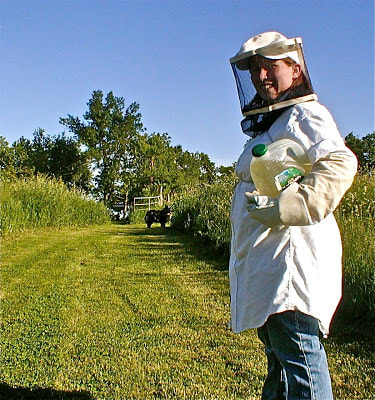 You will see that I do not wear a full suit. I still wear gloves and the veil and the white shirt though. I get too hot in a full suit, but I do wear one if I am dealing with a comb removal from a house or angry wasps. I recommend that unconfident, super allergic, and children wear full suits that are hard to get out of. Here's why. Last summer I was working with a newbie keeper who had committed himself to a feral colony removal. He had presented himself as experienced but chatting on the way to the location, I learned that this was his first time. He'd been keeping bees for about four weeks and had never done a removal. There are several red flags here. Newbies should always apprentice through a whole season before getting their own hives. Second, never commit yourself to a swarm removal if you have never done it. I guess that's why he asked me to tag along. The bees were an old colony, about 7 foot tall combs and an entire wall of a shed. Luckily the owner wanted the shed torn down, so damage was not an issue. However, this was not a swarm removal, this was a colony relocation. This hive was at least 5 years old if not more. I found 3 queen nukes and a very healthy queen. Newbie began by smoking the bees, but not enough. Then a crowbar to the top of the wall. So many things wrong here I will explain in another post. My point is, the bees riled up and swarmed him. One stung him through his improperly fitted hood right on the nose and he panicked. What did he do then? He tried to get out of his bee covered suit! If I had not been there, he would have stripped down, exposing himself to so many angry bees, possibly needing an ambulance. So, the suit must be difficult to unzip. Also never work alone. For normal checks on easy going hives, I just like to wear the basics, but well fitted. There are some cultures that beekeeper naked! I'm not that extreme. If it is really hot, I wear a sweatband to keep my eyes from getting dripped sweat soaked and impairing my vision. I try not to work in extreme heat, usually waiting until either early morning, or dusk when it is cooler. I found that my normal clothes are too predator like in colour. Also that the bees get stuck in my hair. My hands are too busy for their liking as well. This is the get up that prevents me from getting stung. I also usually wear boots, but closed toed comfortable shoes of any kind can work. Also, I work the back of the hives because my belly bumps out the front (three kids and post pregnancy belly fat.....) and that tends to get the bees buzzing more. Recipe for Bright Tea 8 small rose hips or 2-4 large ones 1 slice of ginger or galanga 1 T of dried Spearmint 4 dried cranberries Honey or Maple Syrup- to taste Lemon, dried or fresh slice almost or just boiled water (190-205 degrees F) I make this for my kids when they are feeling a little sick. Rose Hips are high in natural vitamin C, mint and ginger are both excellent for nausea, cranberry for flavour, and honey for anti-inflammatory healing. I plan on making up a bag for my morning sickness suffering friends too. It is a wonderful soothing, bright tea. I also drink it when the winter blues are hitting me hard. It is caffeine free, but the vitamin C really helps with energy levels. Wait? Do folks in the South get winter blues? We sure do y'all! It can even get cold enough here to SNOW. But the cold, overcast, greyness of the winter sky wears on us just like it does on our Northern counterparts. I find though, so much gratitude in the warmer winter days. Just three years ago I was having buckets of feed and water to livestock in -60 windchill praying that my eyeballs wouldn't freeze into icy blind marbles. Winter in Iowa is no joke. Winter on a livestock farm is even less funny. Combine the two and it is unimaginable hell. The cows, sheep, and pigs still need food and water, sometimes 3x a day. Always 7 days a week. I totally get why some livestock is raised in sheltered, temperature controlled, confinement. Mine were open pasture and open timber raised. So THANK GOD for Savannah winters, I'll sip my Bright Tea on the wide front porch in my light sweater, sweet kick boots, and regret nothing while watching the once every 5 years snow fall, dreamlike. When I moved to Georgia with four beehives, three boxes of poetry books, my kids and their backpacks filled with play clothes and movies, and my own small suitcase of dresses, the hives were empty and dirty. I rough cleaned them of wax and dead bees and bagged the parts up for transport. Then they sat unused for years. At one point I took in a feral swarm but neighboring construction and the chop and burn land clearing process they used drove off the skittish colony.
The new packages will arrive in two weeks so my daughters and I set to cleaning the boxes and popping in new frames. The first step was blowing off pollen and dirt and bugs that had accumulated in storage, then assessing any damage. Set boxes and frames that need repaired aside. It's basic carpentry that my ten year old can do. Post on that soon. The second step was washing the pieces with dish soap and water followed by a Clorox wipe, wipe down. Air dry. Don't worry, Clorox wipes don't leave a residue that will harm these bees. Next was to remove the waxed up old foundations and pop in bright yellow new ones. The paint job is still in good shape, but basic white. Next week the boxes all get painted Polish style, bright colors with floral designs. In that post I will explain why I have chosen that approach. Technically, at this point the hives are ready for bees, but the paint job comes first. 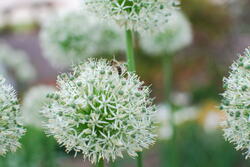 And now for something completely different...... Last night I took my children to a local Sushi place, it is our once a week outing. The waitress knows what we order and puts in in when she sees our car park. My kids eat a giant plate of friend rice, veggies, and their choice of meat. I get a green tea and a California roll. My kids are always high tension when we get there, post family therapy appointment, processing big emotions and hungry. Behavior is forgiven by the owners and staff, but I am always on edge about bothering others. Single mom life is hard. HARD. Hard in ways that is hard to describe sometimes. And my own emotional wire is also pulled taught and electrified post therapy. My ears perked up when I heard the elderly couple at the table next to ours complaining about a mom and badly behaved kids. Mine? I listened deeper.... They had gone to a shop early in the day and the employee had her kids there. From what I gather, one of the very young children was rude to the man, "How dare he tell me to bug off! Kids these days are so awful! And the mom refused to quiet them! Even when I told her how upsetting it was!" The woman replied, "We should call corporate and report her. That will show her." Tingles when up my spine. I tried to focus on my own kids and their behavior, one girl picking on the other, my youngest asking over and over about Captain Underpants. I kept looking at the couple though and their friends. Very well dressed, manicured, conversation turned to Country Club gossip after the decision was made to call corporate on this minimum wage mom who offended them, or rather, whose child had. I couldn't say anything. That would be rude. To call people out, strangers at that, in public is rude. And I am always exhausted. I couldn't muster the energy to make a scene. But....here's what I want to say to them: If a person, a mom usually, has her children at work with her? Something in her life has gone sideways. Her regular childcare quit, is hospitalized or ill, she has no backups, or she is otherwise in crisis. Sideways. And sideways is never a good situation. Her kids are going to know they are a complicating factor but she can't afford not to go to work. She's lucky enough to have an understanding boss. But her kids are going to be riled up with the change of routine and crisis. You know what 100% will not help this situation? Getting her fired. Please don't do that. I've been there, sneaking my kids in the backdoor and blending them in with students in my college classroom, with headphones and a dvd and coloring books. My campus doesn't allow children on site. But I can't miss class. I can't miss a paycheck. I can't risk leaving them unsupervised at home either. What, wealthy elderly couple do you think she should have done? Sell off some her artwork and eat cake? Please consider doing the following instead: Say, "I bet you are having a bad day, I hope it gets better." Send her a card that says something hopeful. Include a grocery gift card. Pray for her. Fill out a positive feedback form for her. I don't care if your experience was awful. She was probably trying hard. I can tell you she has probably been bone tired, driving by your gated neighborhood, crying in her car because motherhood is hard, doing it on your own is harder, and working working working. Kindness is free, y'all. Kindness is free. And it takes a thousand flowers and a thousand bees to make a spoon of honey. They work together to survive. All about the Bee. Backyard bee keeping is gaining popularity and everyone is pro- Saving the Bees, even Cheerios has a seed pack as the cereal treat now. Honey Do is ablog about bee lore, bee keeping, historical bee facts, honey recipes. Inspired by the book Bees: A Honeyed History. There will be posts reviewing bee books, bee themed toys, fancy, regional,and rare honeys. There will be equipment "what's this" posts. Profiles of different kinds of bees (that's not a honey bee, that's a yellow jacket). The different references to bees in religion and historical works.
Meet Danelle, the blue haired beekeeper in Southern Georgia. She's got three kids, four acres, and a bunch of bees. Stay tuned for more. |
This Blog:All about the Bee. Backyard bee keeping is gaining popularity and everyone is pro- Saving the Bees, even Cheerios has a seed pack as the cereal treat now. Honey Do is ablog about bee lore, bee keeping, historical bee facts, honey recipes. Inspired by the book Bees: A Honeyed History. There will be posts reviewing bee books, bee themed toys, fancy, regional,and rare honeys. There will be equipment "what's this" posts. Profiles of different kinds of bees (that's not a honey bee, that's a yellow jacket). The different references to bees in religion and historical works. ArchivesCategories |
Danelle Lejeune, Copyright © 2015-2021

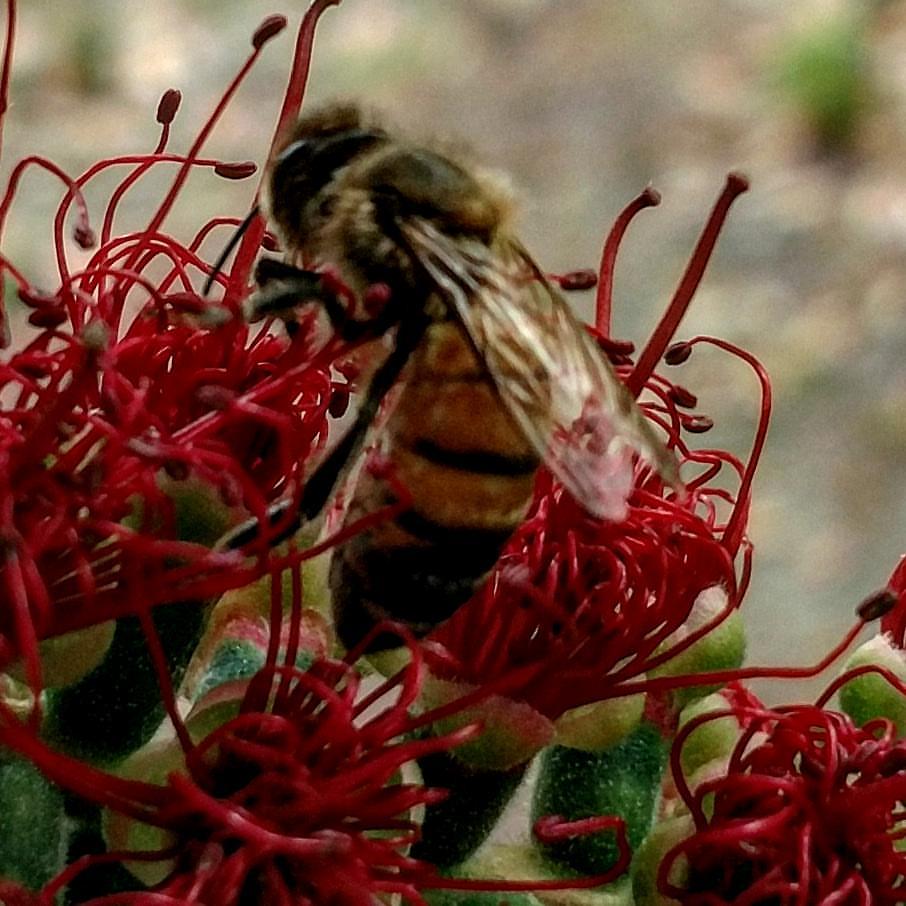
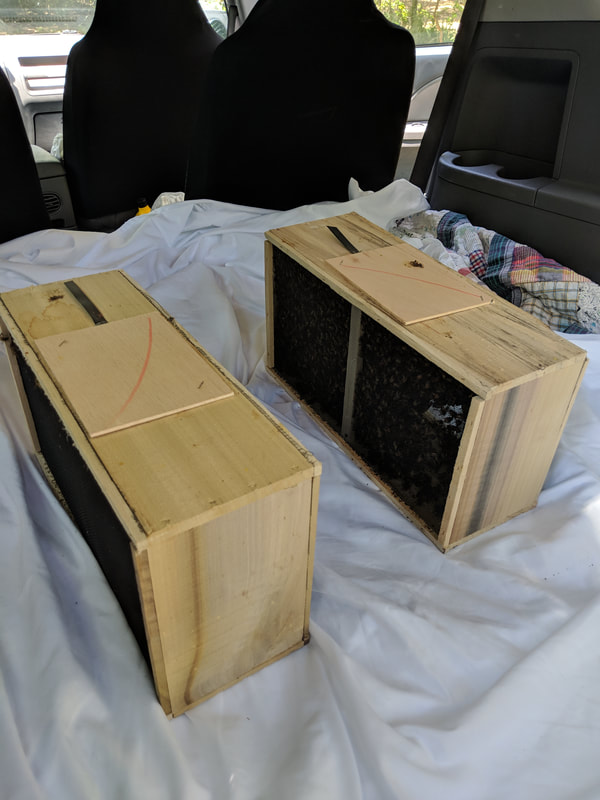
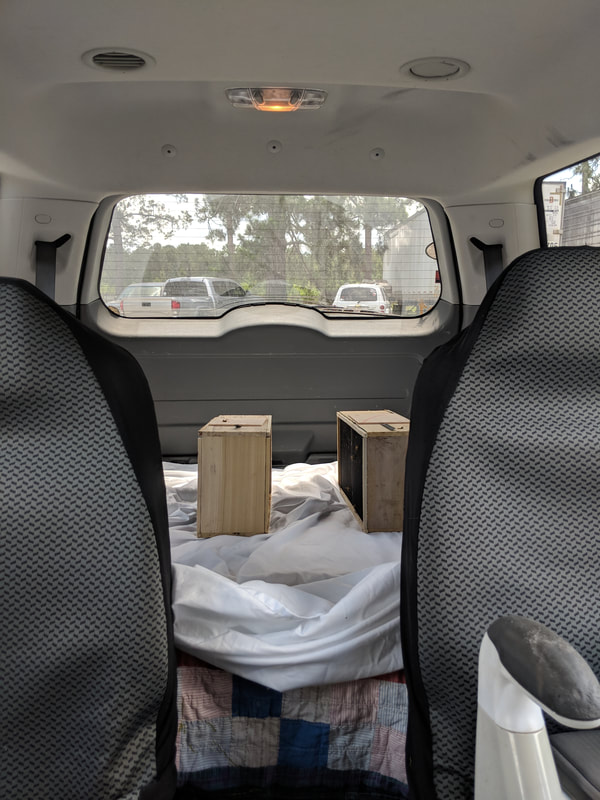
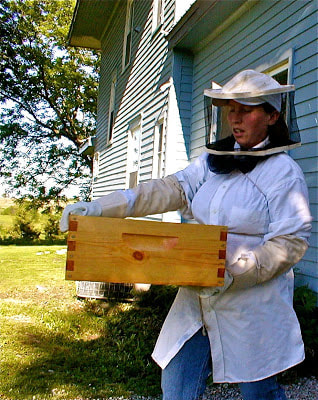

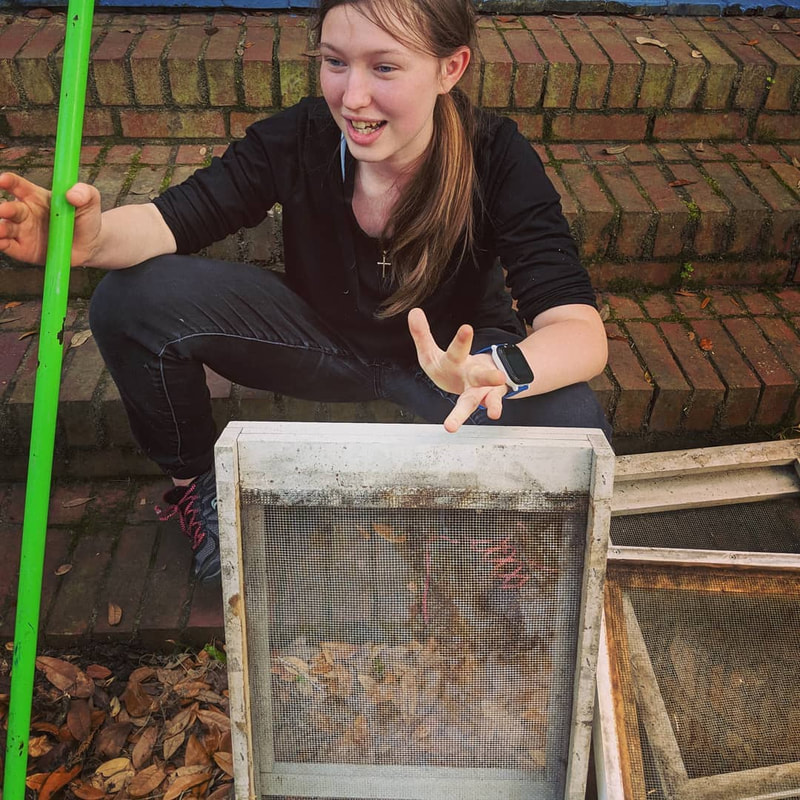
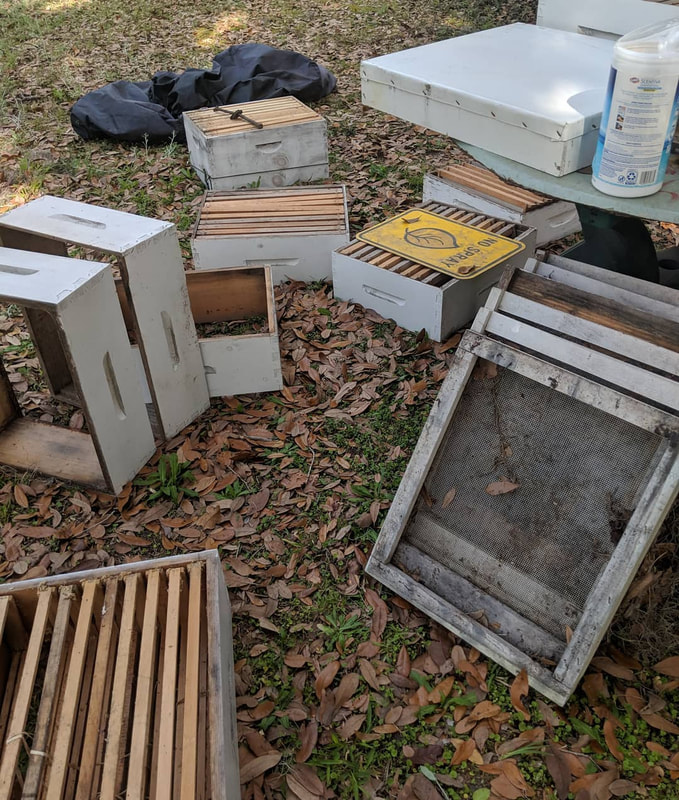
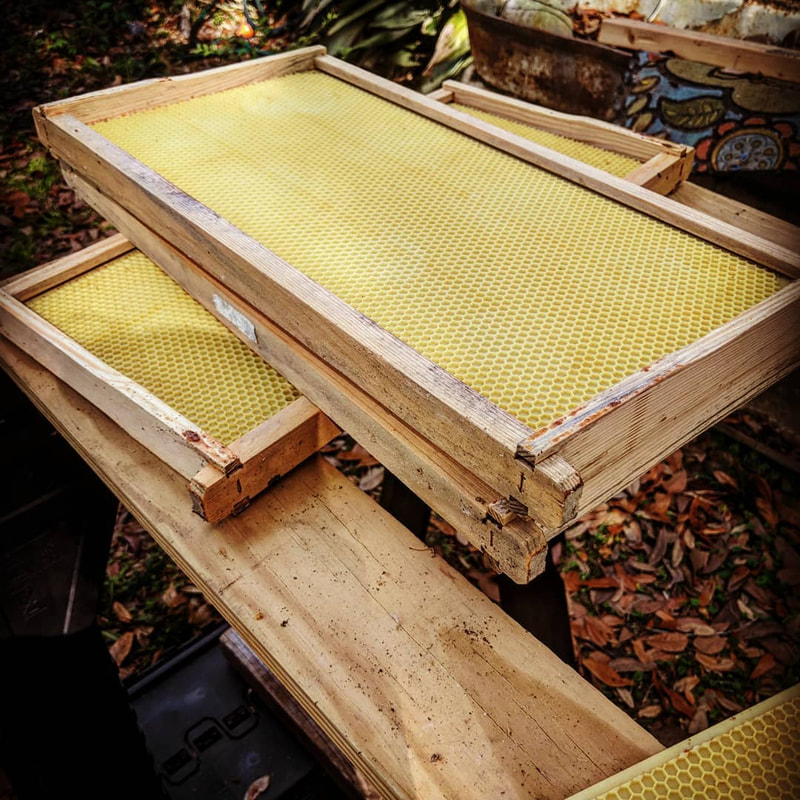
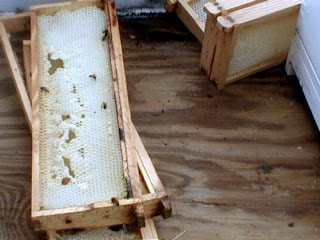
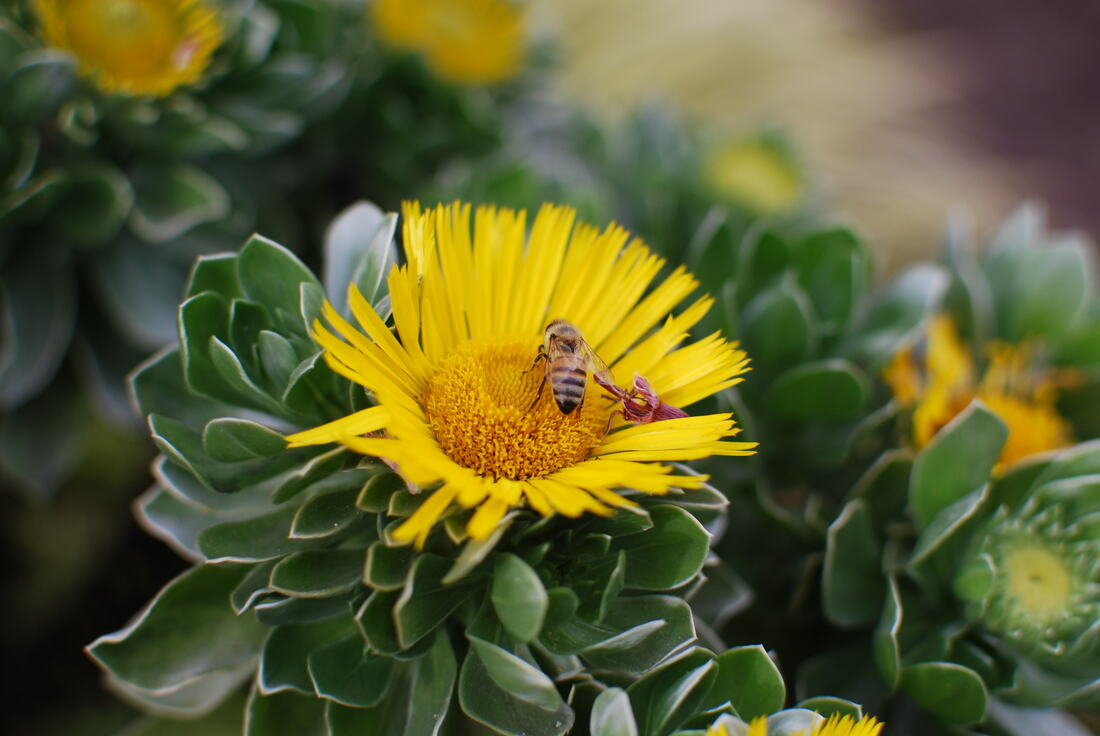
 RSS Feed
RSS Feed